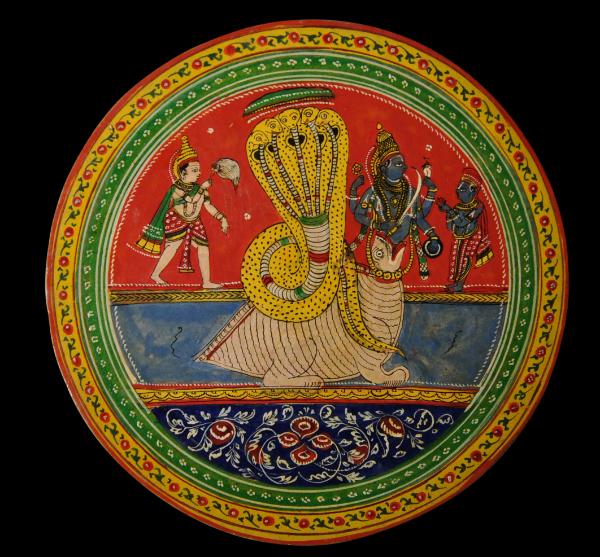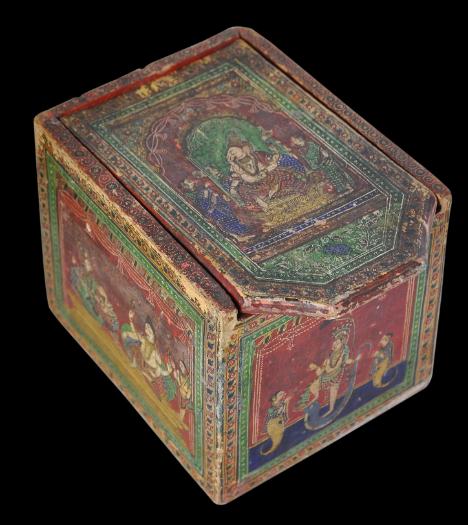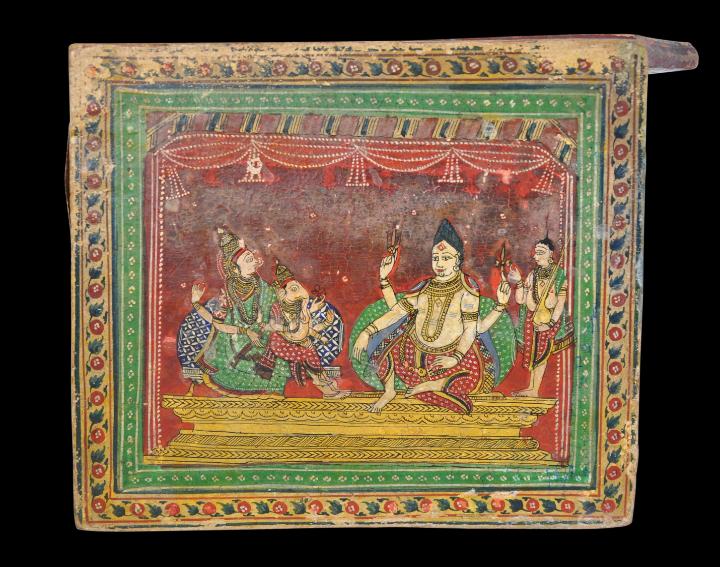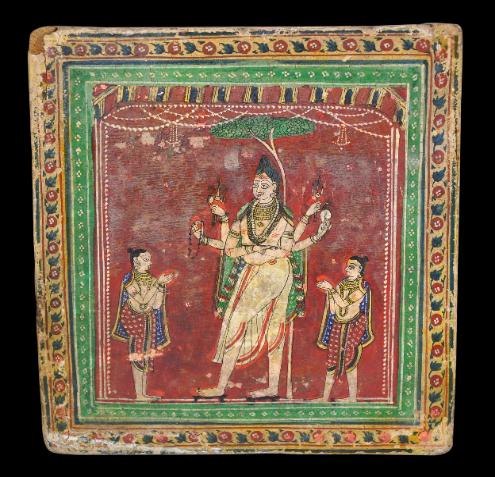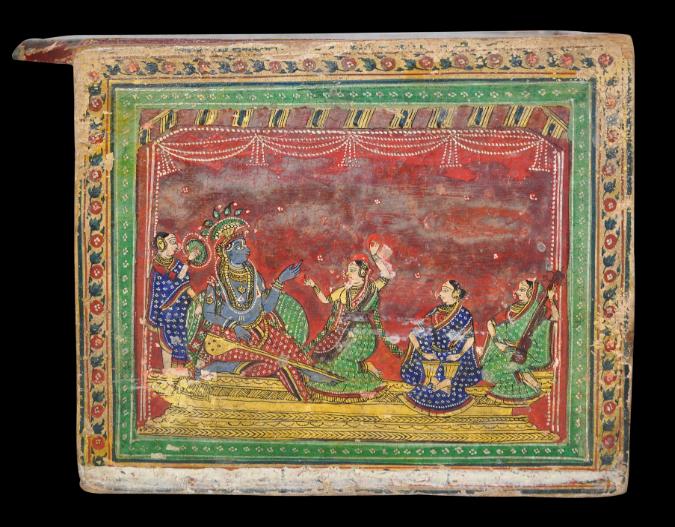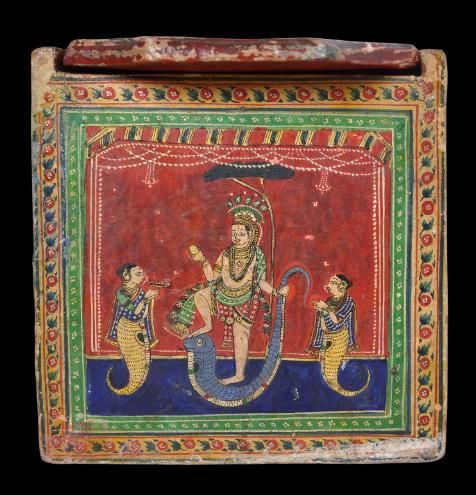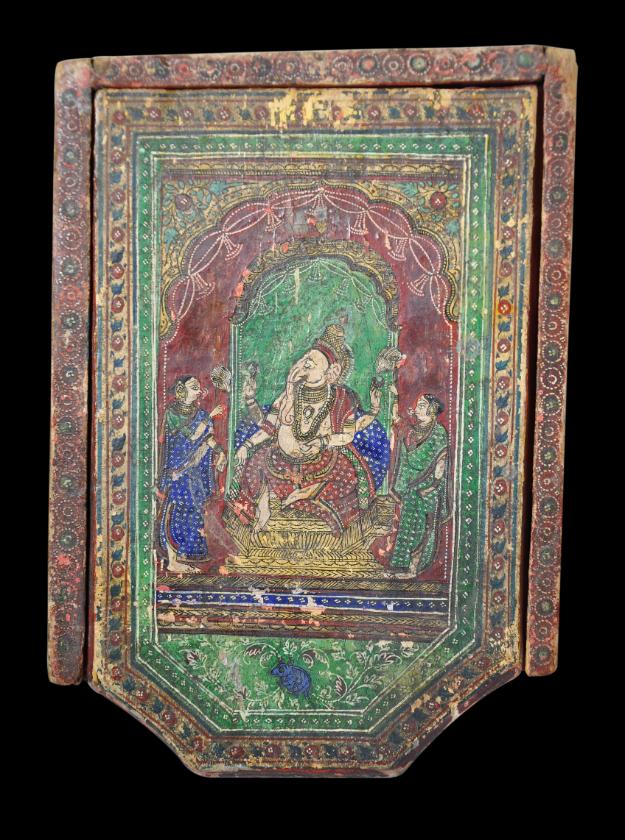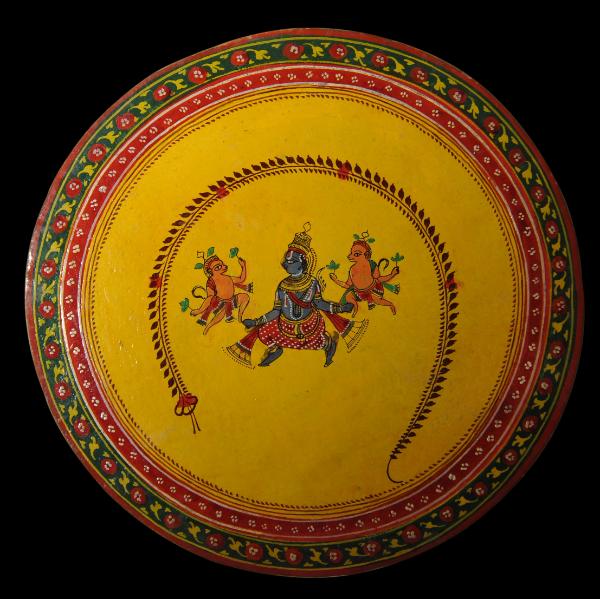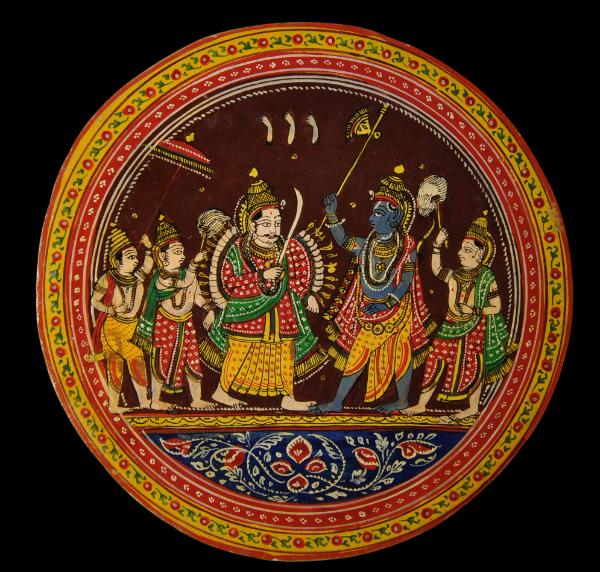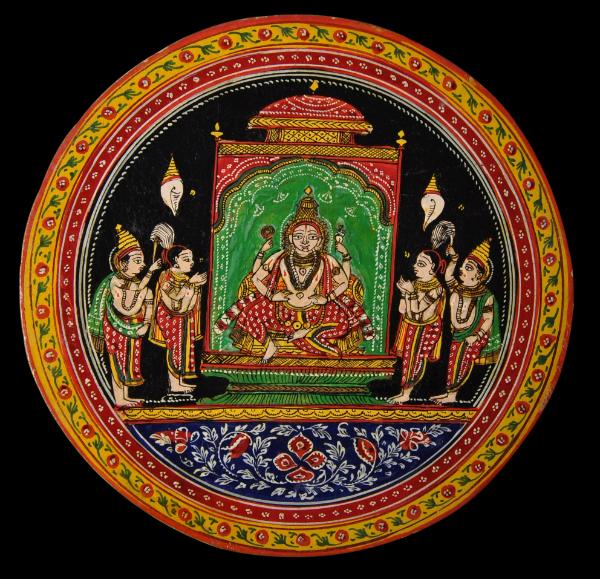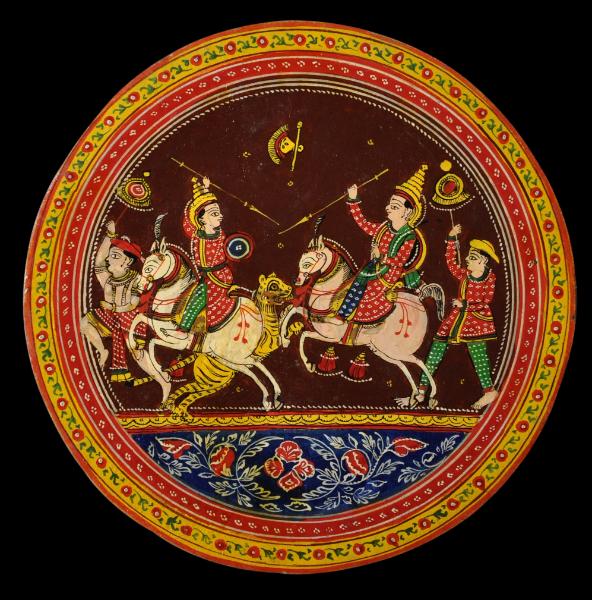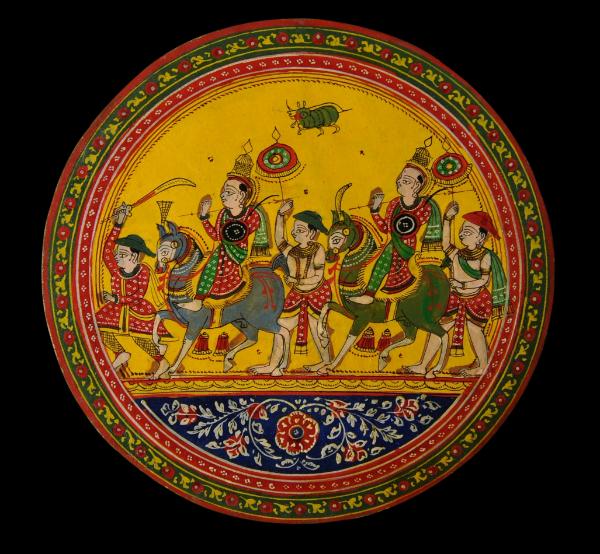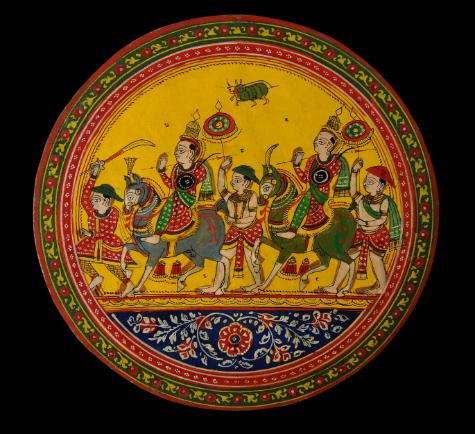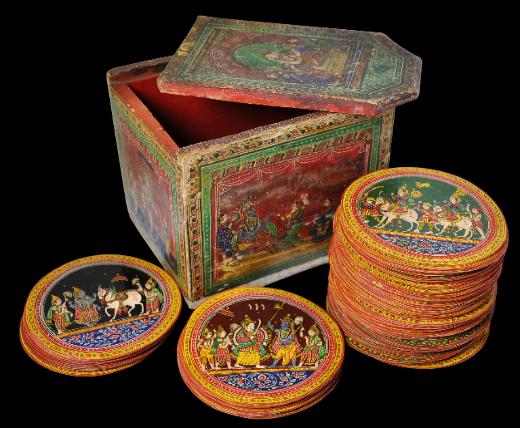Ganjifa Indian Playing Cards
Large & Fine Complete Dashavatara Ganjifa Set & Box
Sawantwadi, Maharashtra, India
circa 1850
height of box: 12.8cm, width: 11.6cm,
length: 16.5cm, diameter of playing cards: 9.5cm
This is the finest Ganjifa set that we have seen. The cards are unusually large and with 120 cards present, it is complete.
The set is housed in a rectangular prism box made of paper-covered wood panels with a cinnabar-red interior and decorated on all exterior sides in polychrome, including the lid which slides in and out to close the box. Each panel of the exterior is finely painted with scenes of Hindu gods including a large one of Ganesh on the lid.
The box contains 120 large, round cards on lacquered card. The cards are highly detailed and well painted – in essence, the box contains 120 well painted Indian miniature paintings! Each card is edged with fine double floral borders. The ‘raja’ or ‘court’ cards are especially elaborate but even the less elaborate ‘numeral’ cards are beautifully rendered and are fine items of artwork in their own right.
The Victoria & Albert Museum has a similar but incomplete set (see von Leyden, 1982, p, 82 & colour plate 1; the set has 112 cards; 8 are missing) which von Leyden (p. 82) describes as a ‘splendid specimen’ which was purchased at the Paris Exhibition of 1867.
The set can be attributed to Sawantwadi (as with the V&A set). Sawantwadi was a small principality in the Maharashtran Konkan, not far from Vergula (von Leyden, p. 81). The local culture was heavily influenced by the southern Deccan more than by that of Maharashtra. The local ruling family was a patron of the arts and music. The locally-produced furniture became well known beyond the principality on account of its finely painted decoration. Very fine
Ganjifa playing card sets were produced locally by a special caste of artists known as the chitaris.Ganjifa originated in Persia but it really flourished in India where the game developed in various forms. Meanwhile, in Persia, the game largely died out. Initially in India, the game was played by the Mughals of northern India, but it soon spread to most parts of the country.
The set here is in excellent condition. No cards are missing and almost all are in perfect condition (one or two have some rubbing). The box is free of cracks and chips. There is some age and use related rounding to the corners and rubbing to the painting but otherwise is in fine condition. The cards, having been stored inside, have been protected.
References
Chopra, S., Ganjifa: The Playing Cards of India in Bharat Kala Bhavan, Banaras Hindu University, 1999.
von Lyeden, R.,
Ganjifa: The Playing Cards of India, Victoria & Albert Museum, 1982.
Topsfield, A., (ed.),
The Art of Play: Board and Card Games of India, Marg Publications, 2006.
Provenance
UK art market
Inventory no.: 2353
SOLD
Ask about this item
